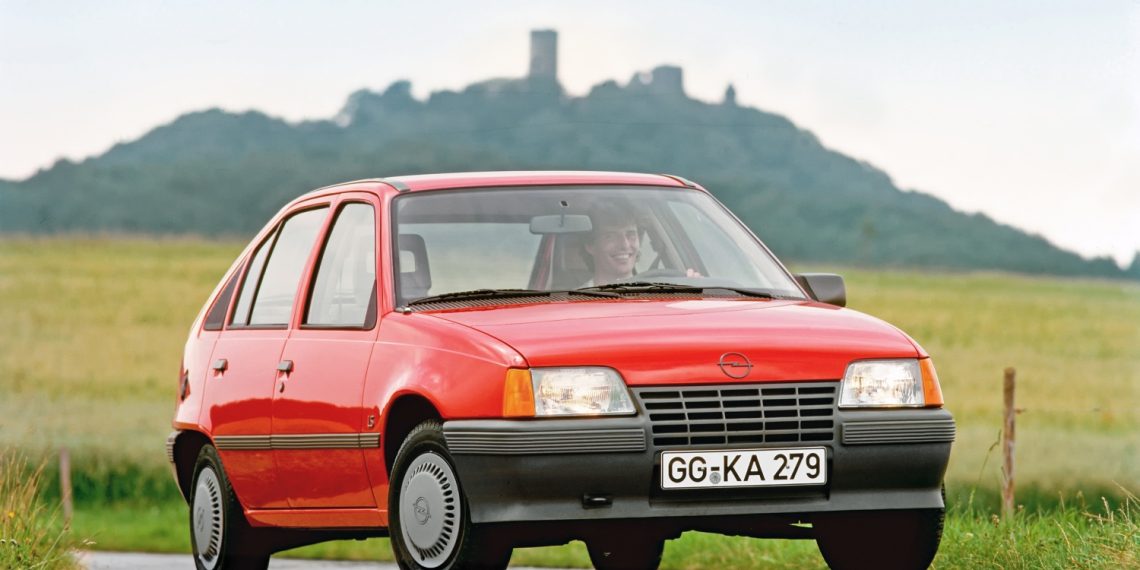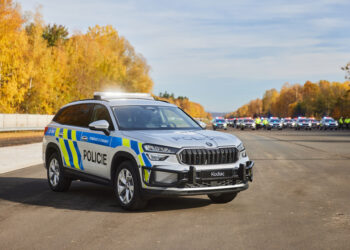The Opel Kadett E turns 40 years old; it was in the autumn of 1984 that the engineers from the Rüsselsheim brand achieved great success. Built on the technical foundation of its predecessor, but with an entirely new hatchback body, the fifth generation of the Kadett thrived.
The foundation of its success was the attractive design, as well as the technical refinement and diversity of variants. At the same time, it was the last model in the compact class from Opel to bear the name Kadett.

The story of the development of the fifth generation of the Kadett effectively began in 1979. As soon as the Kadett D, the first front-wheel-drive model from Opel, was launched on the market, ideas for its potential successor were already being gathered.
In product development and manufacturing in Rüsselsheim, several engineers, technicians, and designers were part of the “Kadett E” project. Over five years, 1.5 billion German marks were invested in the development of the Kadett E.
Before being ready for mass production, the prototypes covered about 6.5 million kilometers – in testing centers, as well as on racetracks, under extreme weather conditions in Northern Europe and in desert regions of the USA. After the completion of exhaustive testing, the moment arrived: the Kadett E – once again with front-wheel drive – was launched in the fall of 1984. It quickly reached dealerships – in an unmatched variety of variants. But this is by no means the only reason that the fifth generation of the Kadett became a bestseller in no time.
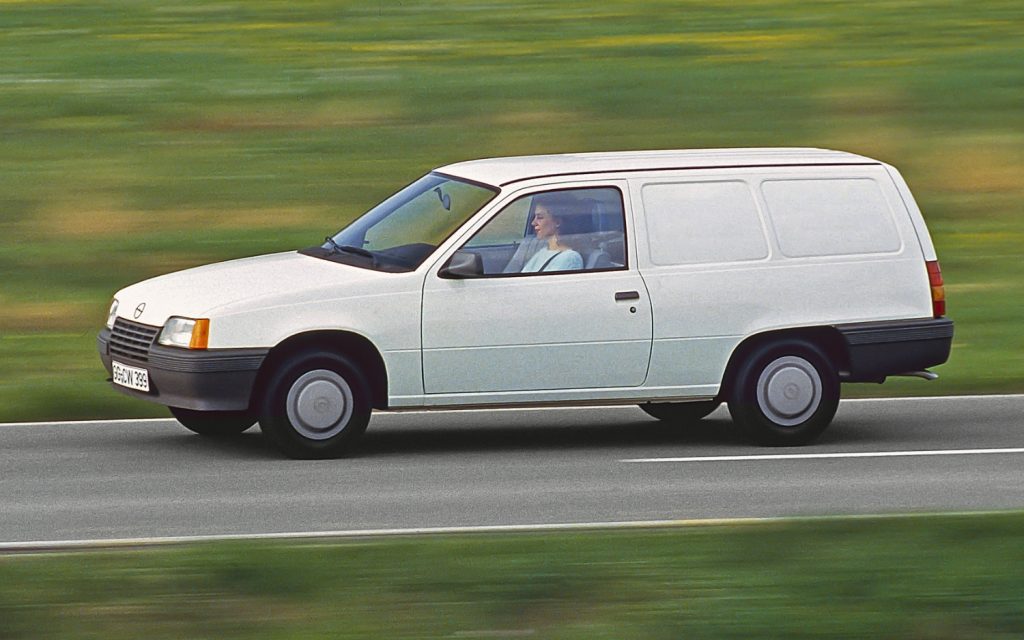
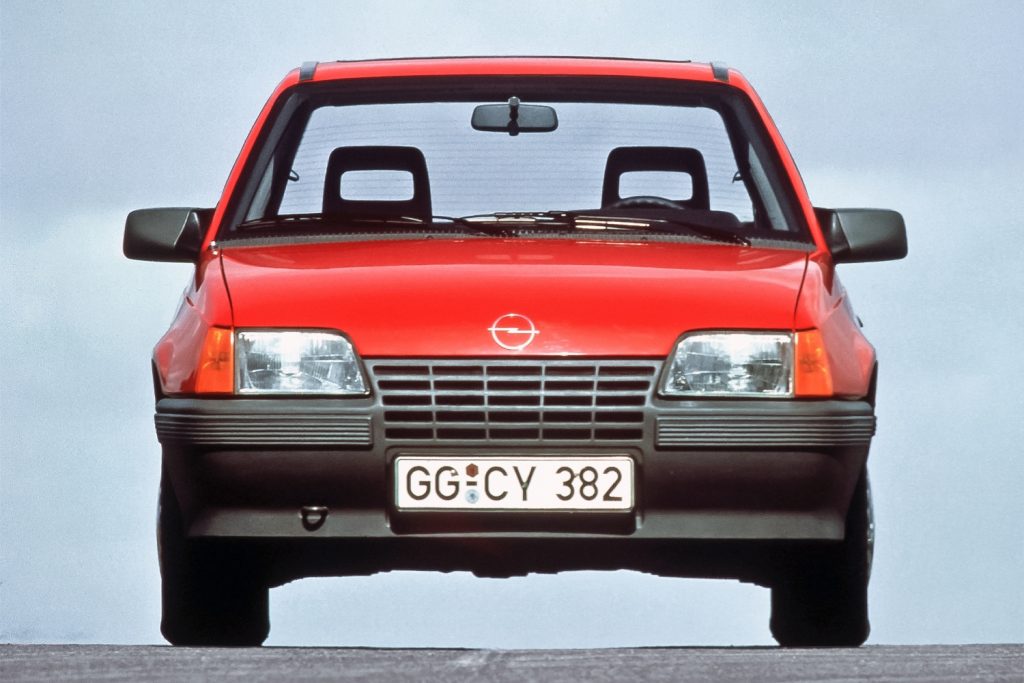
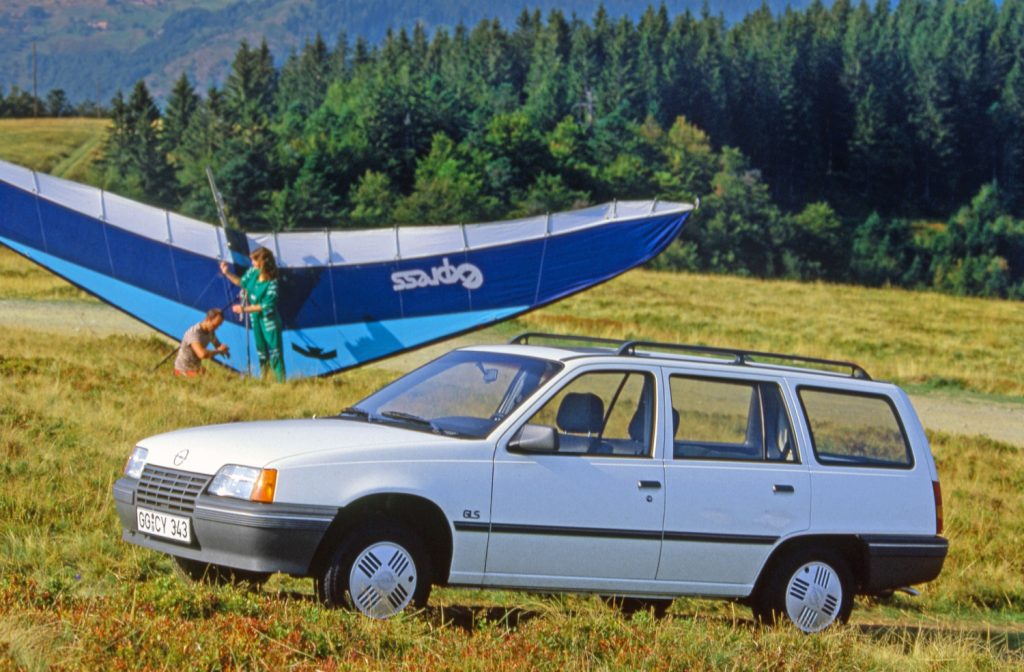
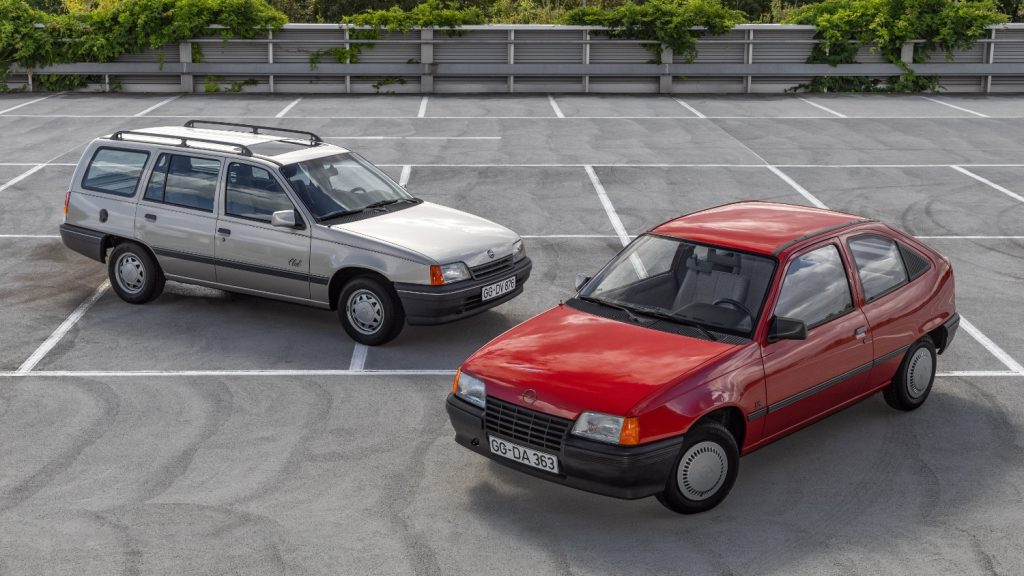
Since the beginning of its commercialization, the new generation of the Kadett was available as a three and five-door hatchback, to which a three and five-door station wagon was added – with a class-leading cargo volume of up to 1,520 liters. Just a year later, the four-door notchback variant complemented the range. And, starting in 1987, outdoor driving enthusiasts could enjoy a convertible variant designed by Italian designer Nuccio Bertone.
In close collaboration with the design team in Rüsselsheim, the stylish “roofless Kadett” was developed at the factory in northern Italy – including an extensive standard equipment, from sports seats for the driver and front passenger to individually foldable rear seats and tinted windows.

The commercial variant, the Kadett Combo, a compact vehicle with a specific rear axle and 180-degree opening rear doors, could support up to 635 kilograms of payload and offered 2.4 cubic meters of storage space, emerged later.
However, the sportier, more powerful variant—and likely the most emotional version of the Kadett, along with the Bertone convertible—is the Kadett GSi, which in its production version was initially equipped with a 1.8-liter engine producing 115 hp. The GSi soon hit the tracks as a Group A touring car with 170 hp and an acceleration from 0 to 100 km/h in just under seven seconds. As the Kadett GSi 16V with a 250 hp engine, it celebrated its victorious debut at the beginning of the 1988 German International Touring Car Championship.

A year later, the Austrians Josef Haider/Ferdinand Hinterleitner became German rally champions with the Opel Kadett GSi 16V. In the same year, an official Opel team entered the German Touring Car Championship with the fifth generation of the Kadett.
In 1989, Opel launched an updated Kadett E, and in 1991, the Opel Astra designation was introduced across Europe, thus bringing an end to the golden chapter of the fifth generation Kadett.

Despite the name change from Kadett to Astra, Opel maintains the way it counts the generations of compact cars – and that is why the latest generation is called Astra L. With it, the brand continues its successful history in the compact class since 2021.

